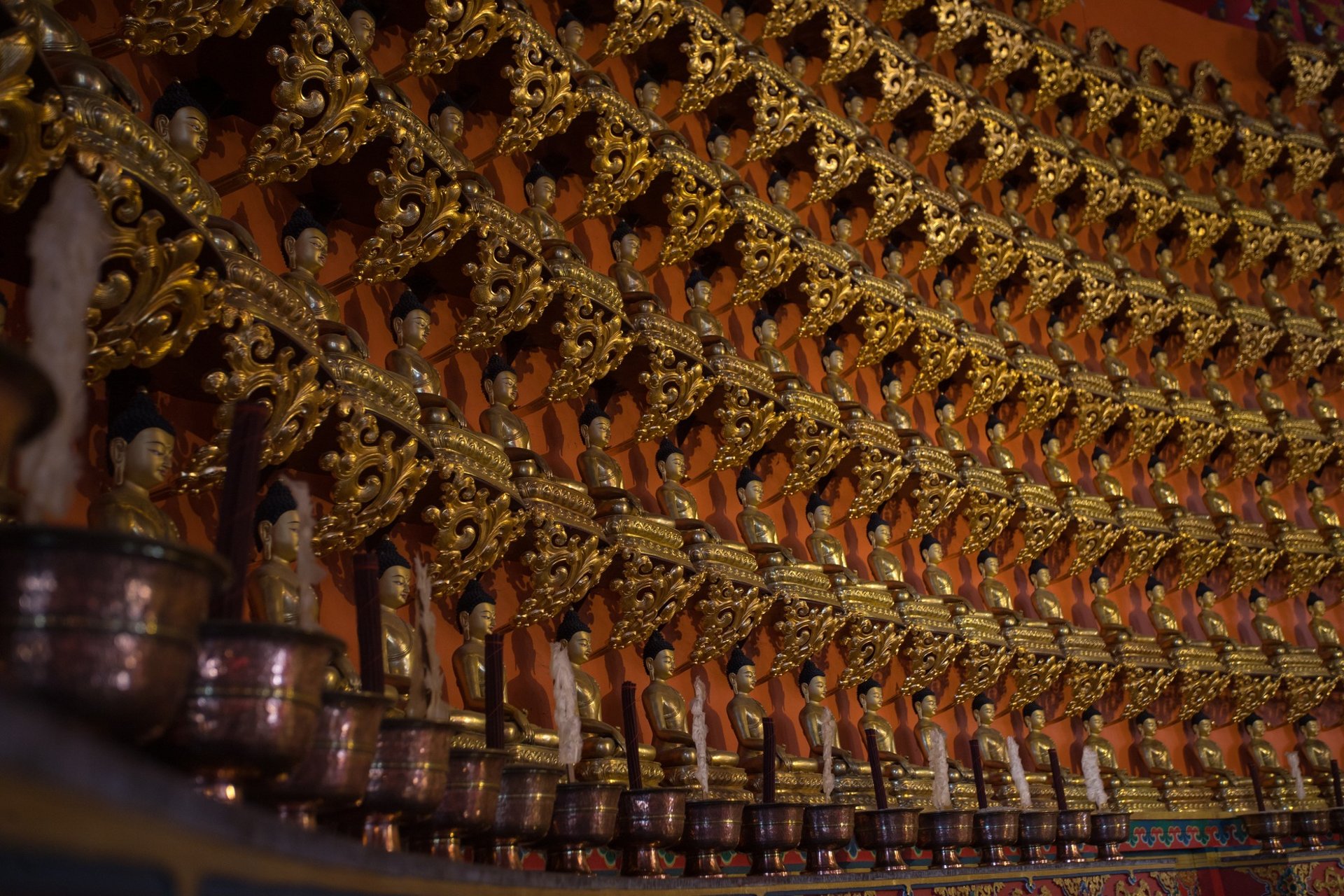We made the decision to go on a little trip this spring to a couple locations that we had never been to before, or at least I hadn't. Lumbini, Bardiya National Park, and Rara Lake were the three primary locations we intended to see. I'll be writing distinct entries for each because I believe they each need their own narrative.
We also knew Lumbini had to be included in the plan because March is my birthday month (yep, I celebrate my birthday throughout the entire month). Buddha was born there, after all. Although I'll admit that I didn't fully grasp the magnitude and intensity of that truth until I moved to Nepal and had a stronger connection to the country and its spirituality.
I'll discuss my experience at Lumbini in this piece, including what I saw, what touched and astonished me, and how a small, dusty town provided one of the most serene and reassuring experiences of my life. Let's get started.
A Quick Look at Religion in Nepal
If you, like me, did not grow up surrounded by temples, prayer flags, and the scent of incense floating through the air, Nepal can feel like entering into a serene, sacred movie scene. And Lumbini, being the birthplace of Buddha, makes you think much more profoundly about what people believe and how they live their lives.
Nepal is officially secular, yet it has a strong spiritual tradition. The majority of people here (about 81%) practice Hinduism. That may surprise you, especially in a setting like Lumbini, yet Hinduism and Buddhism frequently coexist in Nepal. They even share some gods, legends, and ceremonies. People will visit both temples and stupas on the same day—why not gather all of the blessings, right?
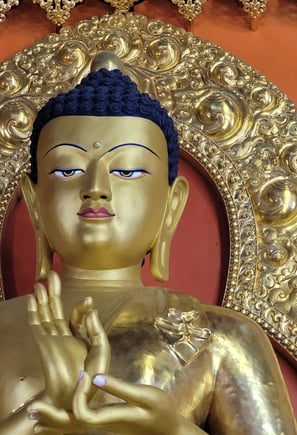

Buddhism is the second most popular religion, with approximately 8% of the people identifying as Buddhist. Aside from the population, the presence of Buddhism here feels strong—particularly in places like Lumbini, Boudhanath, and the mountainous regions near Tibet.
Monasteries are filled with young monks (some as young as five or six years old!) studying philosophy, doing duties, and, yes, occasionally kicking around a football or watching cartoons when no one is chanting. Their lives are simple but strong, focusing on mindfulness, compassion, and minimalism.
I believe this is what makes Lumbini so unique. It's more than just viewing temples; it's about feeling a peaceful energy that binds us all, whatever of our beliefs.
Lumbini Travel Basics: Everything You Need to Know
Best Time to Visit Lumbini
Lumbini is tucked away in the southern part of Nepal, not too far from the Indian border. What does that mean in real life? Well, if you visit between April and June, be ready to sweat—it can get seriously hot, with temperatures climbing up to +40 °C. Basically, it’s the kind of heat that makes you question all your life choices.
Then comes monsoon season (July to September), which turns everything lush and green—but also very wet. If you love unpredictable downpours and carrying an umbrella like it’s your third arm, this might be your time.
But honestly, the best time to visit Lumbini is between October and March. The skies are clear, the sun is gentle, and the weather is just perfect for slow walks around the sacred garden and soaking up the peaceful vibes—without melting or swimming through it.
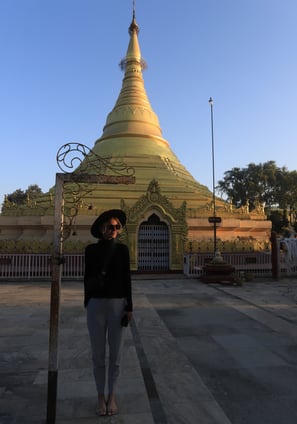

Our visit was on the 3rd of March, 2025
How to Get to Lumbini from Kathmandu
There are a few ways to reach Lumbini, depending on your time, budget, and how much adventure (or comfort) you're in the mood for:
Book a tour (a.k.a. the easiest, but priciest way)
If you want zero planning and zero stress, you can book a full package through a travel agency. They’ll take care of everything—transport, hotel, guide, probably even your lunch. But keep in mind, this is the most expensive option and might not feel very personal or flexible.
Fly from Kathmandu to Bhairahawa (Gautam Buddha International Airport)
This is the fastest way. The flight takes about 30–35 minutes, and from the airport, it’s just a 30–40 minute taxi ride to Lumbini. Great if you’re short on time or allergic to long bus rides. Flights usually cost a bit more, especially during tourist season.
Tourist bus from Kathmandu (what we did)
We went with budget friendly (and surprisingly comfy) night bus option. Our bus left Kathmandu at 7:00 PM and rolled into Lumbini just before 7:00 AM—yep, a 12-hour ride including a dinner stop and a few bathroom/stretch-your-legs breaks. The bus wasn’t bad at all—they gave us blankets and bottled water, and most people just slept through the night. We paid 2,700 NPR (about €17) for two one-way tickets, which is a pretty good deal for a full night’s ride across the country.
Know This Before You Arrive
If you're heading to Lumbini, it's good to know a few things in advance—because this place isn’t just one temple and a souvenir stall. It’s big. Peaceful, yes, but also bigger than most people expect.
Lumbini was declared a UNESCO World Heritage Site in 1997. It’s one of the most sacred places for Buddhists from all over the world because this is where Siddhartha Gautama (Buddha) was born more than 2,600 years ago. If you plan to visit Lumbini on Buddha's birthday, make sure to check the precise date online—it changes every year because it is based on the lunar calendar's full moon in the month of Baisakh rather than a fixed solar date. As a result, it alternates between late April and early or mid-May. If you're not a lover of large crowds, you might want to skip the celebrations—on that day, thousands of people from all over the world gather in Lumbini, which can get very crowded.
Lumbini area is divided into four zones:
Sacred Garden (Main Zone). This is where the Maya Devi Temple stands—the exact spot where Buddha was born. The Maya Devi Temple, which stands at the heart of the Sacred Garden, protects the Marker Stone—the believed birthplace—and ancient ruins dating back to the 3rd century BCE. Just nearby, you’ll find the Ashoka Pillar, erected by Emperor Ashoka of India when he made a pilgrimage here in 249 BCE. It’s one of the earliest inscriptions linking Buddhism directly to this site. Entry fee: 700 NPR for tourists, 20 NPR for Nepali citizens. Lucky us—we just had to show our marriage certificate, and I only paid 20 NPR!
Monastic Zone (East & West). This is where it gets visually fascinating. Over 30+ temples and monasteries have been built by different countries, each reflecting its own architectural style and Buddhist tradition. East Zone: Theravāda tradition (e.g., Thailand, Sri Lanka, Myanmar). West Zone: Mahāyāna and Vajrayāna (e.g., Tibet, China, Japan, Korea, Germany). Every temple is different, so it’s like walking through a spiritual version of “Buddhism Around the World.” Some are open to the public, some not—just check the signs. Entry fee: for free. The only expenses you’ll have here are if you decide to hire a tuk-tuk (make sure to agree on the price in advance) or rent bicycles. We ended up sharing a tuk-tuk with another couple, but in the end, we overpaid and gave the driver 1100 NPR (for both of us). The area is totally walkable too, but if you’re in a rush, there’s always an option to pay a little extra for a ride.
World Peace Pagoda, built by Japanese Buddhists as a symbol of global harmony. It stands at the northern end of the Lumbini complex and makes for a quiet, meditative walk—especially early in the morning or late afternoon.
Lumbini Village Area. This is where local life happens—shops, restaurants, guesthouses, and access to transport. We didn’t stay here, so I can’t say much about the accommodation. The one upsetting thing? Seeing how polluted this area was.
Here's a basic map to help you plan your route—whether you're walking, biking, or tuk-tuk-ing your way through enlightenment.
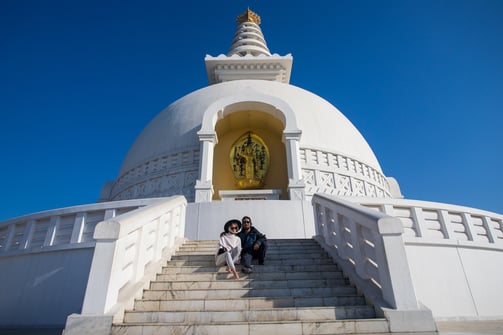

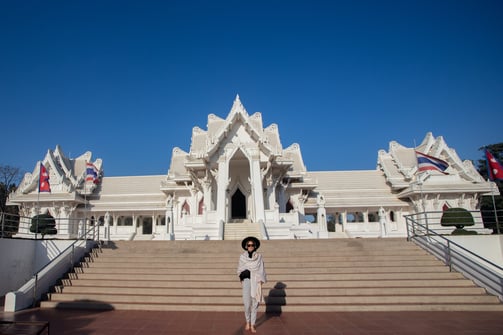

A Little Respect Goes a Long Way
When visiting a sacred place like Lumbini, it’s not just about sightseeing—it’s about showing up with presence, humility, and a little common sense. I always like to think of it this way: if you were visiting someone’s grandma’s house, you’d take off your shoes, speak gently, and definitely not start taking selfies without asking. Lumbini deserves the same kind of energy.
First things first—you’ll need to take off your shoes before entering any temple, monastery, or sacred space. It’s not optional, and honestly, there’s something quite grounding about walking barefoot where pilgrims have walked for centuries. Just make sure to wear something easy to slip on and off (trust me, fiddling with laces in 35°C heat is not a vibe).
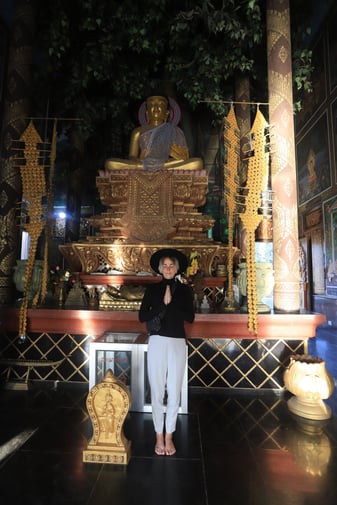
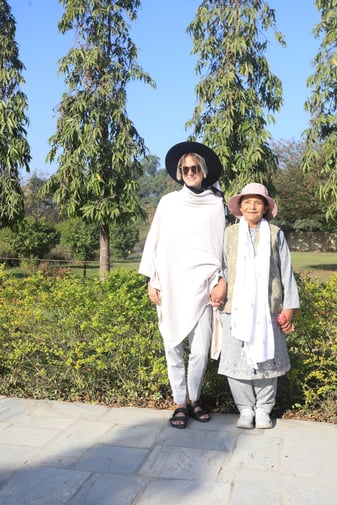
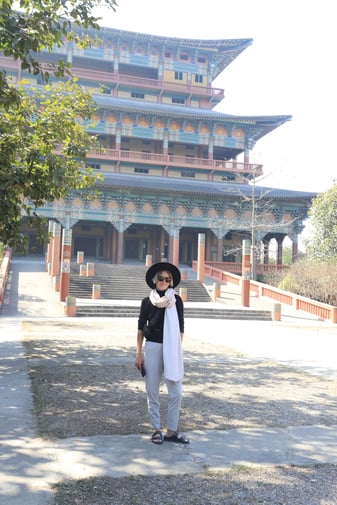



Dress modestly. I know it’s hot, but save the shorts and crop tops for somewhere else. Shoulders and knees should be covered. Loose trousers, long skirts, and airy shirts are perfect. You don’t need to look like a monk, just respectful and put-together. Remember—this is a place of worship, not a summer festival.
One thing that’s easy to forget: check the signs before snapping photos. Some temples are happy for you to capture the beauty, while others ask for privacy and silence. If it says “no photography,” just respect it. There’s always someone who thinks they’re being subtle, but it’s always obvious… and awkward.
Another small but meaningful detail—don’t point your feet at Buddha statues or sacred objects. In Buddhist culture, feet are considered the lowest part of the body, so stretching your legs toward a shrine (especially when sitting down) is a big no-no. Sit cross-legged or to the side if you’re taking a rest.
Also, please don’t climb on stupas, ruins, or ancient stones. Yes, they look photogenic and tempting for “that shot,” but these places are sacred and often very old. They’re not made for climbing—they’re meant for honoring.
While wandering through the temples or sitting near the Bodhi tree, try to keep your voice low. Lumbini is incredibly peaceful, and the energy shifts when everyone moves and speaks mindfully. Loud phone calls or travel gossip can really break the moment—for you and everyone around you.
If you’re interacting with locals, monks, or vendors, a small tip—use your right hand (or both hands) when giving or receiving anything, whether it’s money, a gift, or even a snack. It’s a simple gesture of respect that goes a long way here.
All these little things—how you walk, speak, dress, and behave—show that you’re not just passing through Lumbini, but showing up with heart. And honestly, that’s what makes the visit meaningful.
Costs Summary
A trip to Lumbini can be as budget-friendly or luxurious as you want it to be. If you’re staying overnight, there are some truly beautiful (and pricey) hotels right next to or even inside the garden area, offering a peaceful and more high-end experience. But if you're like us—trying to keep it simple and save your budget for other adventures—it’s absolutely possible to visit Lumbini without spending much at all.
Since we were heading to our next destination soon after, we kept our costs low and focused on what really mattered: soaking up the energy of the place. For two people, our total spending came to 4,800 NPR, which is about €31. That included our one-way bus tickets from Kathmandu to Lumbini for 2,700 NPR, a late dal bhat dinner with Coca-Cola for 600 NPR, and a few snacks we brought ourselves for the ride.
Once we arrived in Lumbini, we grabbed an early morning coffee for 160 NPR before heading out to explore. We shared a tuk-tuk with another couple for 1,100 NPR to visit the different monasteries, and for entry to the Sacred Garden, we paid just 40 NPR—thanks to our marriage certificate, which gave me the same price as a Nepali citizen. To get from Lumbini to Bhairahawa later, we took a quick taxi ride that cost 200 NPR.
All in all, it was a beautiful, peaceful, and meaningful experience—and it didn’t break the bank. You really don’t need a big budget to enjoy the essence of Lumbini.
Final Words
Lumbini turned out to be much more than just a historical stop. It’s peaceful, meaningful, and gives you a chance to slow down and reconnect—whether you're on a spiritual path or just curious about the place where Buddha was born. With a little planning, it can be a very budget-friendly trip, or a more luxurious one if you're in the mood to treat yourself.
If you're already making the journey to Lumbini, I really recommend adding a few more places to your trip. You can head to Chitwan for a jungle safari and a glimpse of Nepal’s wildlife, relax by the lakeside in Pokhara, or, like we did, continue west to Bardiya National Park for a quieter, off-the-beaten-path safari experience.
Whichever direction you choose, Lumbini is a beautiful place to start—or pause—your journey through Nepal.
पहाडबाट, सान्द्रा
From the mountains, Sandra 🙏✨


